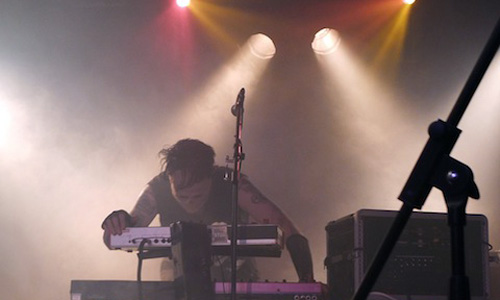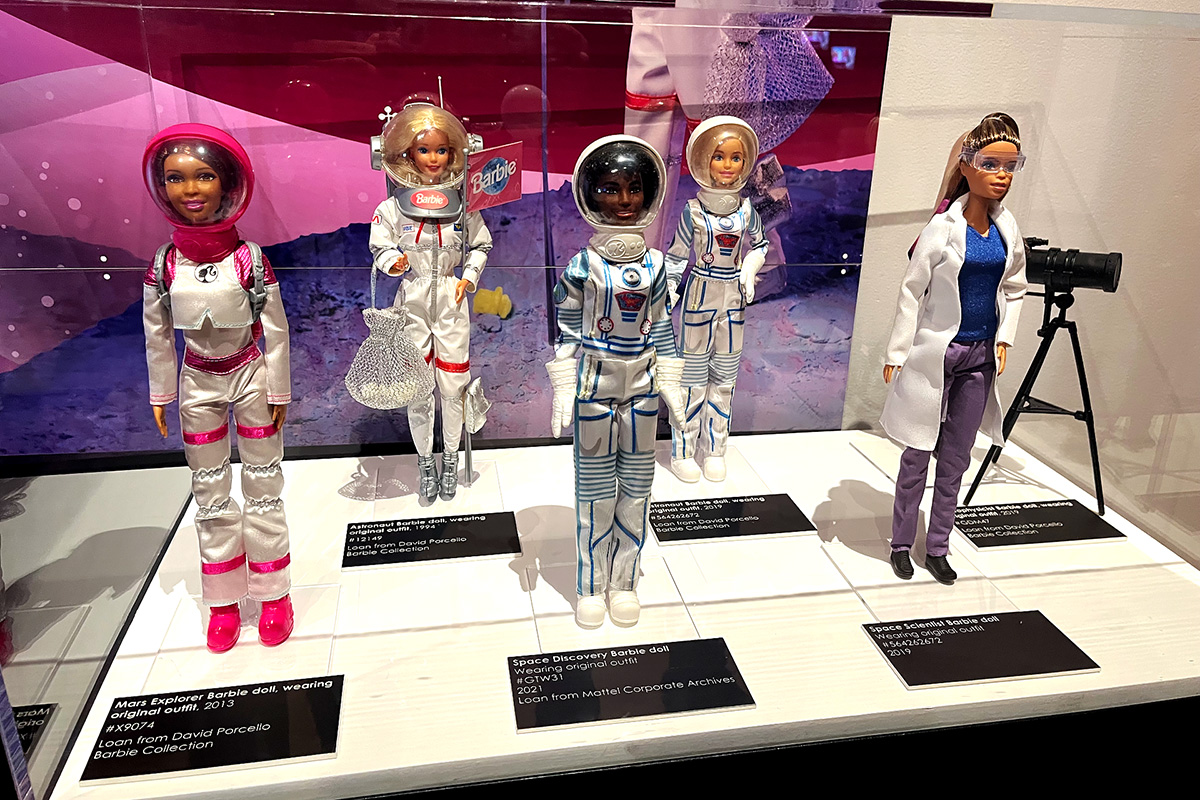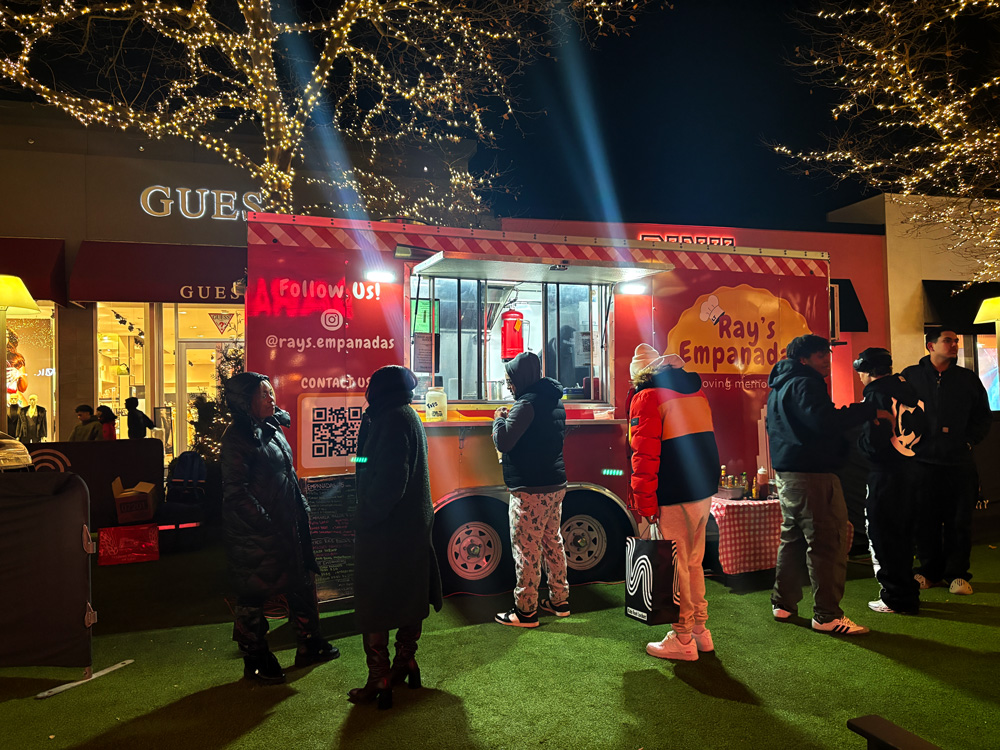By Annette Siguenza
Bronx Journal Staff Writer
Originally considered the “Fathers of Industrial,” Throbbing Gristle coined the term in 1977 when they founded Industrial Records in London. It referred to music that sounded like it was generated from machines rather than instruments—much of it a rhythmic drone. Industrial music engenders many forms these days. Artists use synthesizers, guitars, and drums, as well as unique equipment such as computer programs, to produce electronic sounds, or simply bang on cans as they did 35 years ago.

Philly Industrial scene
“Industrial music is a perspective that examines ‘progress’ through history with a sarcastic eye, or at least a skeptical one. It’s usually through certain sounds as laid down by the whole founding fathers,” said Michael Kay, a 22-year-old New Jersey native and a regular at Philadelphia’s and New York City’s industrial events.
A two-hour drive from NYC, Philly’s industrial events compete with a larger club space, younger crowd attendance (some events are for all ages) and earlier entrance time (usually at 8 p.m.), unusual in the NYC nightlife.
This past October, bands Imperative Reaction, God Module and System Syn under Philly’s Metropolis Records were featured on the Triptych Tour at the 3,000-square foot Sullivan Hall in NYC and Philly’s 14,000-square foot club Starlight Ballroom.

Matthew Rodriguez, a 32-year-old resident in the Bronx who goes by DJ Echo, defines ‘90s industrial as “heavy metal with electronics.” Rodriguez recalls listening to Skinny Puppy using electronic samples and the band Nail Bomb banging on metal. Rodriguez also refers to bands on the Triptych Tour as having established unique forms of industrial-EBM (electronic bass music). “Industrial nowadays has so many genres. At this point bands that were [rooted] in the genre for a long time have turned from that.”
There are a lot of sub-genres: Aggrotech, IDM (intelligent dance music), future-pop, industrial metal, and industrial rock, to name some. As with all music genres, a culture or “signature” look develops among fans.
“There are certain ‘looks’ which generally correspond to different musical tastes, demographics, and interests. Industrial genre is just one of those. So there’s the Rivethead crew, who wear a lot of black and big boots and shaved heads…they’re not white supremacists, they just are into the look. Also, the big artists that the crowd likes were all about examining fascism,” Kay said. “The New York scene is older, less diverse, and more ‘Goth’ than the Philly scene.”
Rivetheads and Cyber-Goths are two of the more vibrant industrial subcultures. Colorful synthetic dreads and PVC attire fluoresced beneath the ultraviolet lights at both venues during the October tour.
Annabel Fagan, also known as DJ Annabel Evil, lived in Kansas City and listened to The Cure and Sisters of Mercy in High School. “I see [industrial] as a more abrasive or aggressive genre of Goth,” she said. Fagan wanted to become a disc jockey after seeing female deejays at two conventions, Convergence and Goth Con, in 2001. In 2006, she moved to New Haven and met Jet Berelson, founder of Vampirefreaks.com, an online community for the Gothic-industrial subculture. Now after 10 years, Fagan is the online Web store administrator for Vampirefreaks.com.
Fagan noted that the worst part of the October shows was that “the [NYC] venue was too small and the Philly one was too big.”

Establishing a recurring party in NYC venues has been an issue in the industrial scene. Many nights are canceled or rescheduled, according to Fagan. “Owners want to make money, and of course, the hip-hop or hipster nights make them money, so it’s often we all get bumped or moved. Jet got in good with Live Nation, that’s who is helping us with the Gramercy Theatre and Irving Plaza shows. It’s an awesome partnership because they want to work with us. Cybertron at the Gramercy has had a great attendance and Vampire Freaks advertises all the shows on the website and on Facebook, which is increasing the attendance to these shows even more.”
Rodriguez has noticed the pushback of venues in NYC as well. He reminisces about clubs such as Element and Albion/Batcave that existed on the scene at the turn of the century when he was 22, noting the bigger, more available spaces. “[In] clubs nowadays, we’re regulated to basements and back ends at bars.”
Rodriguez says that disc jockeys are trying to keep the New York City scene alive regardless of having to play at smaller venues. “They’re still trudging and still working. Guys at Defcon [a regular industrial and EBM night underground at the Pyramid] had it forever. No one is going to kick them out of there.” The Pyramid was also the first establishment for Cybertron events, as Fagan stated.
Deejays Annabel Evil (Fagan), Jet and Mighty Mike Saga met at the Black Sun Festival in New Haven in 2006.
“I performed at Dracula’s Ball, the largest Gothic/Industrial event in Philadelphia and usually play weekly at Philly’s longest running Gothic/Industrial/’80s alternative night, Nocturne. I am featured in New York City frequently at the Smack! And Byte parties,” said Saga, also known for his intricate graphic designs and promotions among the Philadelphia and New York industrial crowds.

Saga was the creator of the Triton Festival flyer, which advertised a three-day industrial event that took place in Brooklyn’s Oceana Hall. People in the scene have fond memories of Triton Festival.
“A gazillion bands right close to home, got dressed up for three nights in a row, and I like to do that,” said Rodriguez, whose two full-sleeve tattoos peeked out from under his suit jacket.
From suit-wearers to music T-shirt lovers, one thing is certain: people go to these events to dance or to watch a show. “I really love dancing for the exercise and the trance state it can create,” Kay said.
Fagan and Kay noticed the less enthusiastic crowd at the Starlight Ballroom. Kay’s reaction: “It was a great show that nobody in the crowd wanted to expend energy for. I mean, great performances and the bands did what they could to elicit crowd energy, but nobody really wanted to give.”
The showstopper for both nights was Clint Carney, the front man of System Syn, who also extended his talents during the tour for the bands Imperative Reaction and God Module.
“I am a huge Imperative Reaction fan. To see Clint’s band and to see Jaysn [Bangert] from God Module in one night was the best,” Rodriguez said. “Three awesome bands in a row was a unique experience.”
Monthly industrial events are promoted through Cybertron in New York or I Love Industrial events in Philadelphia.








No comments